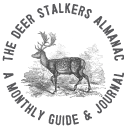
What to expect from your Deer Stalking month by month. Enter your email address below to receive the Almanac:
.303 British
The .303 British or 7.7x56mm is truly a legendary cartridge, first developed in the 1880s as a black powder round, it was converted to cordite in 1890's and then to smokeless propellant in 1910.
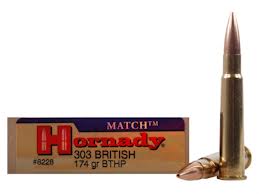 This is the round that assisted Britain win two world wars. The .303 British was first used in the Lee-Metford Rifle which replaced the Martini-Henry in 1888. It is however perhaps more widely known for having been used in the famous Lee Enfield No.4 MK.2 Rifle.
This is the round that assisted Britain win two world wars. The .303 British was first used in the Lee-Metford Rifle which replaced the Martini-Henry in 1888. It is however perhaps more widely known for having been used in the famous Lee Enfield No.4 MK.2 Rifle.
(Left: The 303 British)
Indeed the Lee-Enfield remained the standard rifle of the British army until it was replaced by the 7.62x51mm NATO in the 1950s. Today there are still hundreds of thousands of Lee Enfields chambering this round still in circulation around the world which are being used as both hunting and target rifles. That said it is very rare today for deer stalkers in the UK to have their rifles chambered in this calibre.
Although over the years there have been numerous variations of bullet weight and design typically the .303 will propel a 150 grain bullet at around 2,720 fps producing around 2465 ftlbs of energy at the muzzle.
Typical Ballistics: (150 grain bullet)
Muzzle Energy: 2465 ft/lbs
Muzzle Velocity: 2720 fps
Back to Overview
6mm BR
6mm BR. Though this calibre was invented in the UK, the 6mm BR does not in fact stand for British as one might expect but instead 'BR' stands for bench rest.
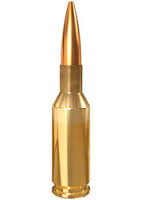 This is an extremely popular in the states and like the 6 PPC is needless to say an excellent Bench Rest Calibre in fact it is perhaps more accurate than the 6PPC at ranges from 300 - 1000 yards, that said there is no denying the 6PPC is still the king of bench rest at closer ranges.
This is an extremely popular in the states and like the 6 PPC is needless to say an excellent Bench Rest Calibre in fact it is perhaps more accurate than the 6PPC at ranges from 300 - 1000 yards, that said there is no denying the 6PPC is still the king of bench rest at closer ranges.
(Left: The 6mm BR)
Originally created by Norma the 6mm BR is also occasionally referred to as the 6mm Norma BR. Norma created the cartridge from the 6mm Remington Bench rest case and made the neck longer and marginally increased the base dimension. Although like the 6PPC it is unusual amongst deer stalkers it is none the less an accurate round and very popular amongst home loaders.
Typically the 6mm BR will fire a 105 grain bullet at 2,950 FPS giving around 2000 ftlbs of energy and just a little more Ooomph than the 6PPC
Typical Ballistics (105 grain bullet)
Muzzle Energy: 2000 ft/lbs
Muzzle Velocity: 2950 fps
Back to Overview
.30.06 Springfield
The .30.06 Springfield pronounced thirty 'ought' six is perhaps the most iconic calibre ever to have emerged from the United States.
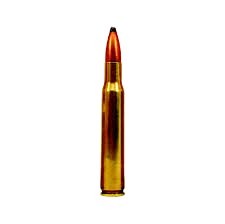 Introduced as a military round in 1906, hence the 'ought six', this .30 calibre cartridge was used by the US military for nearly 50 years before being replaced by the 7.62 NATO and more recently the 5.56 NATO.
Introduced as a military round in 1906, hence the 'ought six', this .30 calibre cartridge was used by the US military for nearly 50 years before being replaced by the 7.62 NATO and more recently the 5.56 NATO.
(Right: The .30.06 great for the UK's largest species of deer)
Today it is still a popular cartridge and is used frequently by hunters in search of medium to large game. At the muzzle the .30.06 fires a 180 grain bullet at about 2700 feet per second and produces 2900 ft lbs of energy.
This is some 200 -300 more ft lbs of energy than the more commonly used .308 in the UK and for many this is enough of a margin to mean that it is more suitable for those hunting in Africa and the US where much of the game is a larger than our native UK deer. Added to this ammunition is widely available both here and abroad and is produced by all the major ammunition manufacturers.
Bullet weights can be found from 110 grains to 220grains which like the .308 gives it great versatility. However there is a price to pay for this little extra energy and that is that the recoil is noticeably more and makes shooting this round a little uncomfortable for many deer stalkers.
Further disadvantages are that many consider the .308 to be a more accurate calibre and this is certainly true of long range target shooters who consistently favour the .308 due perhaps to the consistent results produced by the more uniform and gentle push produced by the shorter cartridge.
For those who want a calibre that is appropriate for hunting both within the UK and abroad the .30.06 is a tried and tested choice however for UK deer stalking alone the .30.06 remains a slightly unusual choice and to my mind is eclipsed by the advantages of the .308.
Typical Ballistics: (180 grain bullet)
Muzzle Energy: 2900 ft/lbs
Muzzle Velocity: 2700 fps
Back to Overview
.308 Winchester
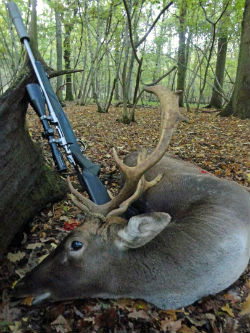 The .308 Winchester is possibly one of the most successful and popular centre fire rifle cartridges ever produced. First developed in 1952 the .308 was introduced as a commercial hunting cartridge. Just a couple of years later the cartridge was adopted and modified slightly to produce the military equivalent in the 7.62 NATO.
The .308 Winchester is possibly one of the most successful and popular centre fire rifle cartridges ever produced. First developed in 1952 the .308 was introduced as a commercial hunting cartridge. Just a couple of years later the cartridge was adopted and modified slightly to produce the military equivalent in the 7.62 NATO.
(Left: A Sako 85 chambered in .308, perfect for the UK's larger species of deer)
This cartridge has a relatively short case and is therefore well suited to short action rifles added to this bullet weights for the home loader range from 73 grains to 200grains all meaning that this calibre can be extremely versatile.
In the UK the .308 Winchester is suitable for all our deer species from Muntjac all the way through to larger species such as Fallow, Red, Sika deer and even boar.
Producing around 2600 ft lbs of energy at the muzzle and retaining 2150 ft lbs at 100yards and 1700 ft lbs at 200yards this calibre has plenty of knock down power yet has very manageable recoil.
 On the downside the .308 has a slightly more curved trajectory than say a .270 or .30.06, dropping 3.9 inches at 200 yards with a 100 yard zero and a little over 14.5 inches at 300 yards. Or 8.4 inches at 300 yards with a 200 yard zero. Agreed not very spectacular however, ask yourself this? How many shots have you taken at 300 yards lately?
On the downside the .308 has a slightly more curved trajectory than say a .270 or .30.06, dropping 3.9 inches at 200 yards with a 100 yard zero and a little over 14.5 inches at 300 yards. Or 8.4 inches at 300 yards with a 200 yard zero. Agreed not very spectacular however, ask yourself this? How many shots have you taken at 300 yards lately?
(Left: The .308 Winchester an all time classic calibre)
As an experienced stalker friend of mine once said "You know exactly what it's going to do and where it's going to come down". Indeed it's a very predictable round and a popular choice for those on the 1000 yard range at Bisley so who are we to argue!
Added to this it has great terminal ballistics. Unlike some calibres the .308 has a predictable wound channel through large game and as they say 'does exactly what it says on the tin!'

There's no denying it is one of the greatest all time hunting calibres in the world which is why we use a .308 with 150 grain ammunition when hunting fallow, Roe and Muntjac and find that in our Sako 85 it is our most popular estate rifle.
For more on why we consider the .308 Winchester to be the best calibre for UK Deer Stalking follow this link: what-is-the-best-calibre-for-deer-stalking
To read about our choice of bullet weight for the .308 click here: what-is-the-best-bullet-weight-for-the-308
Typical Ballistics: (150 grain bullet)
Muzzle Energy: 2600 ft/lbs
Muzzle Velocity: 2820 fps
Back to Overview
.270 Winchester
Originally developed in 1923 and released by Winchester in 1925 this cartridge is basically a necked down .30.06 Springfield.
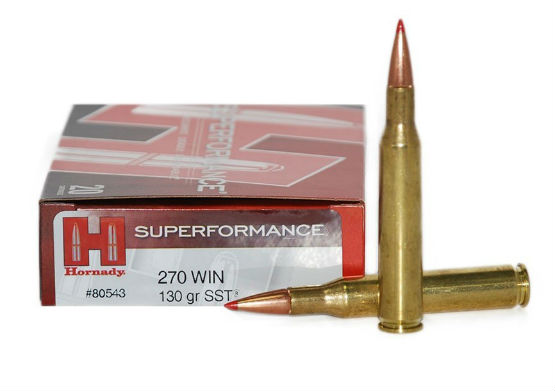 It is undoubtedly one of the most widely used rifle cartridges ever and has been in and out of fashion amongst deer stalkers and hunters ever since its first introduction.
It is undoubtedly one of the most widely used rifle cartridges ever and has been in and out of fashion amongst deer stalkers and hunters ever since its first introduction.
(Left: The .270 can be adapted to accept a variety of bullets)
The Calibre for many is synonymous with the famous American Gun Writer Jack O'Connor who wrote for 'Outdoor Life' for some 30 years. Jack O'Connor proclaimed the calibres praises for all kinds of game and today it is still a calibre that many feel ideal for Uk Deer Stalking whilst also being suitable for larger species such as Boar and Elk.
Typically used with 130 grain bullets the .270 can propel a bullet at around 3100fps or with a slightly heavier 150 grain bullet at around 2850fps. This produces some great terminal ballistics at long ranges and as such it is a first choice for many stalkers wishing to hunt larger deer species at longer ranges.
It is for these reasons perhaps not surprising therefore that it has been highly popular amongst Highland stalkers and the Scottish Forestry Commission who are often required to cull Deer at longer ranges than might be typical for a lowland stalker.
With 2700 ft lbs of energy at the muzzle the .270 Winchester has similar energy levels to the .308 Winchester however it is of course flatter shooting. That said there are draw backs and these include what some might find a slightly snappy kick which for many new comers to deer stalking can result in 'flinching' when taking the shot. That added to a significant muzzle blast and slightly more expensive ammunition means that it is for many lowland stalkers less desirable than some other calibres.
On the plus side it can be relatively versatile and for home loaders can be used with anything from 90 - 180 grain ammunition. The popularity of the calibre amongst UK stalkers is also improved due to the now frequent use of sound moderators which both decrease the muzzle blast and recoil to more manageable levels.
Typical Ballistics: (130 grain bullet)
Muzzle Energy: 2700 ft/lbs
Muzzle Velocity: 3100 fps

















